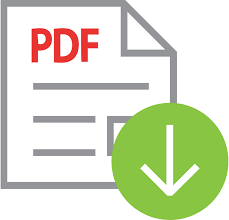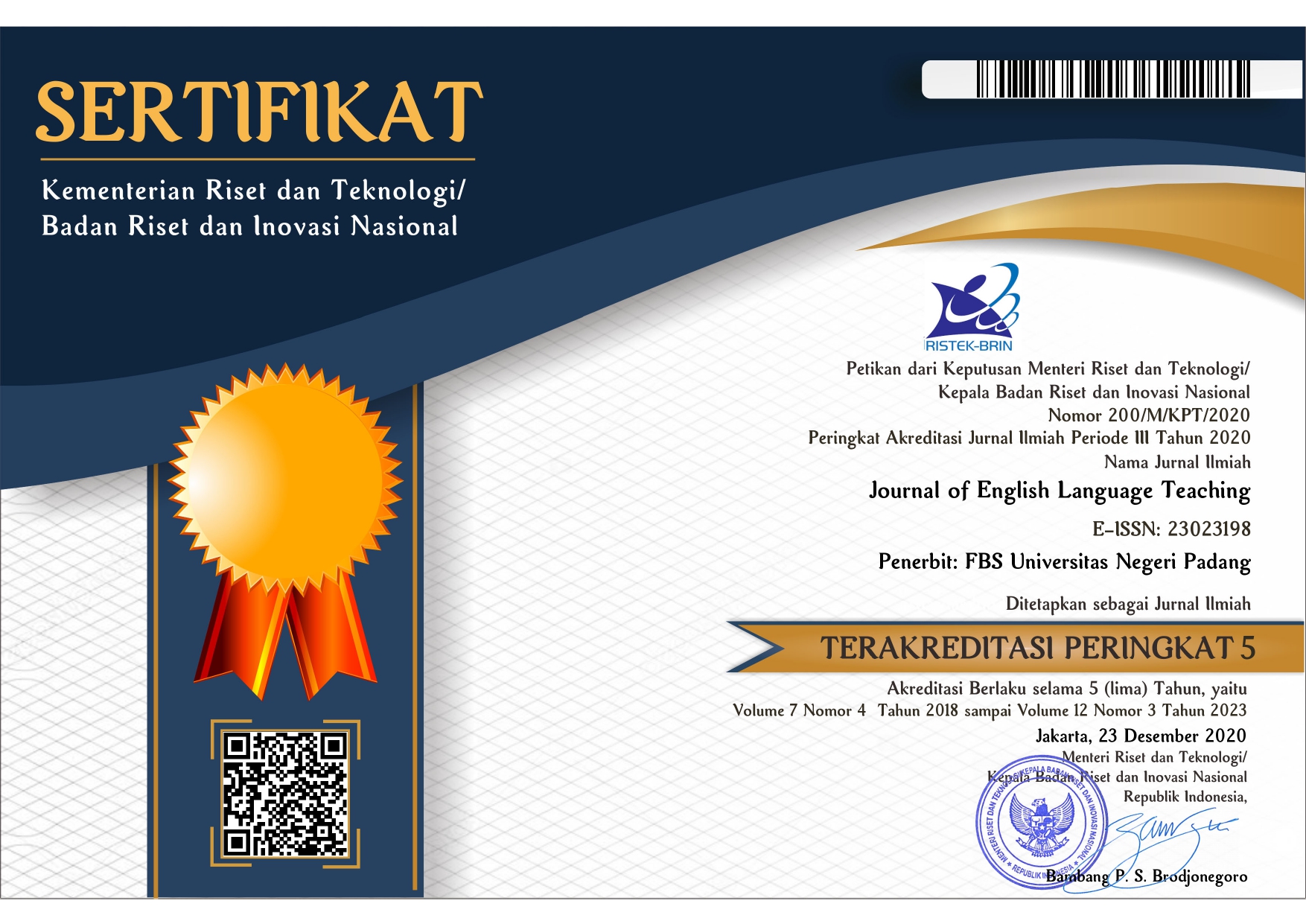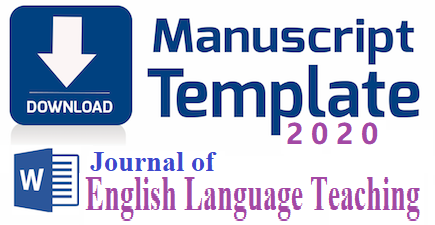The Rhetorical Structures, Passive and Active Voices, and Voices Mistakes in Undergraduate Students' Thesis Abstracts
 ), M. Affandi Arianto(2),
), M. Affandi Arianto(2), (1) Universitas Negeri Padang
(2) Universitas Negeri Padang
 Corresponding Author
Corresponding Author
Copyright (c) 2024 Diva Puspa Ningrum
DOI : https://doi.org/10.24036/jelt.v13i4.130892
Full Text:
 Language : en
Language : en
Abstract
Keywords
References
Azar, B. S., & Hagen, S. A. (2009). Understanding and using English grammar. Pearson education.
Berkenkotter, C., & Huckin, T. N. (1995). Genre knowledge in disciplinary communication: Cognition/culture/power. New Jersey: Lawrence Erlbaum Associates.
Cooray, M. (2014). The English Passive Voice. University of Dayton. Retrieved from http://eltj.oxfordjournals.org/
Creswell, J. W. & Miller, D. L. (2000) Determining Validity in Qualitative
Inquiry, Theory Into Practice, 39:3, 124-130, DOI: 10.1207/s15430421tip3903_2
Fauzan, U., Lubis, A. H., Kurniawan, E. (2020). Rhetorical Moves and Linguistic Complexity of Research Article Abstracts in International Applied Linguistics Journals. The Asian ESP Journal.
Gay, L. R. (1992). Educational research: Competencies for analysis and applications. Macmillan.
Hyland, K. (2000). Disciplinary Discourses: Social Interaction in Academic Writing. London: Longman.
Hyland, K. (2004). Disciplinary discourses, Michigan classics Ed.: Social Interactions in academic writing. Michigan: University of Michigan Press.
Juanda, M. R., & Kurniawan, E. (2020). A Comparison of Rhetorical Moves in Students’ Undergraduate Thesis Abstracts. Proceedings of the 4th International Conference on Language, Literature, Culture, and Education (ICOLLITE 2020). Atlantis Press.
Junaid, R., & Santaria, R. (2022). Common Mistakes In The Students’ Academic Writing; Rethinking For Curriculum Development. European Journal of Humanities and Educational Advancements, 3(3), 69-76.
Kitjaroenpaiboon, W. & Kesprathum, S. (2014) A study of Active and Passive Voice Construction Used in Educational Administration Dissertation Abstract Writing. Thailand : Suan Dusit Rajabhat University
Lorés, R. (2004). On RA abstracts: From rhetorical structure to thematic organization. English for Specific Purposes, 23(3), 280-302. https://doi.org/10.1016/j.esp.2003.06.001
Luthfiyah et al. (2015). An Investigation of Cohesion and Rhetorical Moves in Thesis Abstracts. IJEE (Indonesian Journal of English Education), 2(2), 145 159. doi:10.15408/ijee.v2i2. 3086
Male, H. (2018). A Structural Move Analysis of Abstracts in Undergraduate Theses : A Case Study at Universitas Kristen Indonesia. The 1st International Seminar on Language, Literature and Education, KnE Social Sciences, pages 284–294. DOI 10.18502/kss.v3i9.2690
Pratiwi, S. N., Kurniawan, E., Gunawan, W., Lubis, A. H. (2020). Move Analysis of Master’s Thesis and Dissertation Abstracts in English and Indonesian. Proceedings of the Thirteenth Conference on Applied Linguistics (CONAPLIN 2020), 568-573. https://doi.org/10.2991/assehr.k.210427.086
Suhadi, A. (2022). Analysis of Students' Understanding in Using Rhetorical Moves on Thesis Abstract. Journal of Language Teaching and Learning, Linguistics and Literature. DOI: 10.24256/ideas.v10i2.3042.
Tseng, F. (2011). Analyses of move structure and verb tense of research article abstracts in applied linguistics. International Journal of English Linguistics.
Walter, E. (2008). Cambridge Advanced Learner’s Dictionary hardback with CD-ROM for Windows and Mac Klett edition. Deutschland: Ernst Klett Sprachen.
 Article Metrics
Article Metrics
 Abstract Views : 39 times
Abstract Views : 39 times
 PDF Downloaded : 10 times
PDF Downloaded : 10 times
Refbacks
- There are currently no refbacks.
Copyright (c) 2024 Diva Puspa Ningrum

This work is licensed under a Creative Commons Attribution-NonCommercial 4.0 International License.
















